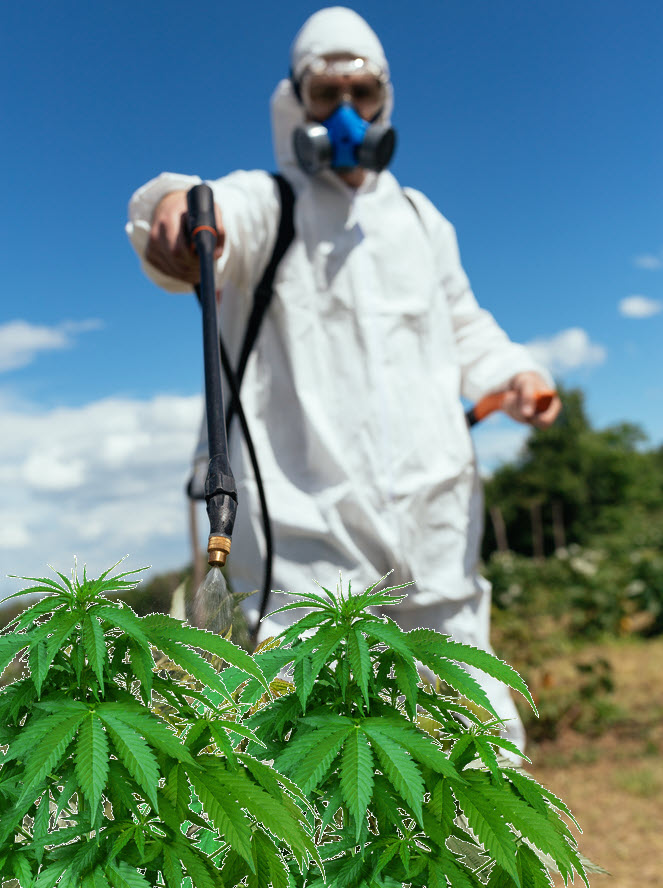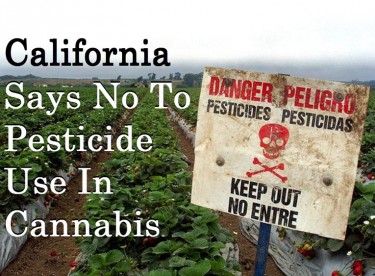
Do Pesticides Change the Taste and Smell of Your Cannabis? How do you know?
The taste and smell of weed has always been an important aspect of cannabis, deciding whether or not a consumer will choose it. Because of this, cannabis breeders are very keen to ensure that the cannabis strain has the best flavor possible. While each cannabis strain has a range of terpenes that can determine the type of flavor it emits, there are other things that can affect them as well. Pesticides have long been suspected as one of the external factors that can determine, or better yet influence to some extent, the taste of weed. However, there is a lot to consider in order to fully understand the relationship between them.
Growing cannabis is an art and science that requires input from both internal components of the plant and external inputs. Pesticides are one such outside influence that helps improve and maintain plant health. It does this by ensuring that insects and pests that are detrimental to the health of the plant are removed or eliminated. Common pests of marijuana plants are mainly insects and powdery mildew. This ensures that the grower gets a good yield from the produce and that sufficient income is not lost to the actions of the pests.
While pesticides are beneficial in ensuring the plant is safe and getting a good yield, they are also known to have some level of harmful effects. A recent study in the Journal of Toxicology showed the effectiveness of pesticides in legal marijuana using a California medical dispensary as a case study. The results of the study raise some eyebrows at potential health concerns associated with chemicals found in smoked marijuana. High levels of chemicals have been found in cannabis buds and a person can be exposed to high levels of pesticides depending on the inhalation method.
In order to understand the answer to the above question, there are a number of things we need to take note of first. One of those things, as mentioned earlier, is that pesticides are external inputs introduced by humans to aid in the growing process. Other inputs that fall into this category are fertilizers and nutrients. These external inputs are chemical substrates that interact with biochemical structures within plants and others outside of them. While producing their effects, the substrates also have residues that remain in the facility and affect the final product.
The magnitude of the effects of the chemical substrates can range from affecting the quality of the buds obtained to the flavor of the strain and its aroma. With this in mind, it is safe to conclude that pesticides, along with other external agents such as fertilizers and nutrients, can affect the taste of cannabis. The extent of the impact depends on various factors, such as: B. the amount of pesticides used, the biodegradability of the pesticide used, the ratio of plant to pesticide in relation to the total cultivated area and so on. Likewise, it is important to note that there is a difference in the degree of effect of pesticide residues on cannabis buds versus fertilizers and nutrients.
Fertilizers commonly contain elements such as nitrogen, phosphorus, and potassium, while some contain calcium or magnesium to a lesser extent. These elements support the production of cannabinoids and terpenes to enhance yield and flavor. Farmers typically flush away the fertilizers with plain waste to limit the impact of residues that could negatively alter the smell or taste of the end product. This process is called rinsing. Pesticides, on the other hand, have components whose action is to kill or repel pests with limited benefit to the biochemical makeup of the plant. Therefore, the harmful effects of pesticide residues are greater than those of fertilizers and nutrients.
Pesticides contain high levels of harsh chemicals that are difficult to leave biological systems. Even after doing their job, they have a great influence on the biochemical composition of the plants. Most growers resort to flushing as a mechanism to remove pesticide residues from the growing area. However, it is nearly impossible to completely remove all pesticides, which means rinsing may not get the job done completely.
The best natural solution that can be suggested to limit the harmful effects of pesticides is to not use them at all and use organic predators instead. Natural enemies of known cannabis plant pests have the added appeal of not leaving any chemical traces on the plant. They are harmless to the health of the plant and therefore only have a limited effect on the yield. They will also help maintain ecological balance around the plant’s community with limited artificial interference.
In cases where it is difficult or impossible to obtain natural enemies of known pests of the cannabis plant, it is recommended to reduce the number of pesticides used. As mentioned earlier, pesticides contain very harsh chemicals and the amount used determines the extent of the effect on the plant. It is therefore best to use a limited amount, sufficient to produce an effect and reduce adverse effects. Flushing is then recommended before harvest, at least 15 days before harvest, to ensure that no unsuitable taste and smell develops in the cannabis buds.
It’s now safe to say that we all agree that pesticides can affect the flavor of cannabis buds. This information could just be the reason why customers can’t get this cannabis on the shelf. Therefore, it is something that must be carefully considered by cultivators during the cultivation process. In cases where use can be avoided, it is best to avoid them, and in cases where this is not possible, limited use is recommended.
PESTICIDES ON CANNABIS, READ MORE…

California Bans Pesticides When Growing Cannabis!

Post a comment: